Fisheries and Habitat Conservation at the Top
By: Amos S. Eno
Posted on:05/10/2011The Views of Bryan Arroyo, Former Farmer and Shepherd, Career Biologist and Lifelong Conservationist
Growing up in Puerto Rico, Bryan Arroyo learned the value of hard work alongside his father. Day after day they’d collect eggs from 2000 chickens, wash and package them, then sell them in the market at a profit of 4 cents an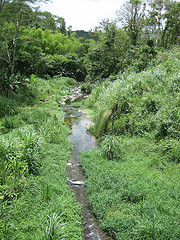 egg. They made a good living until they were forced out of business by a much larger company. When they switched to raising goats, young Bryan grew the business from one pregnant female to a herd of 22 goats - until daily attacks from feral dogs forced them to sell again.
egg. They made a good living until they were forced out of business by a much larger company. When they switched to raising goats, young Bryan grew the business from one pregnant female to a herd of 22 goats - until daily attacks from feral dogs forced them to sell again.
“Sheepherders sit and think a lot about things,” Bryan says, “and my dad and I fished a lot. With the time I had to observe animals in their habitat, I grew to appreciate nature for nature’s sake.”
After high school, Bryan violated community expectations by foregoing a career as doctor or lawyer to pursue a dream of professional baseball. After an “eternal slump,” he decided to focus on his strength in science.
Bryan inhaled his biology courses at Catholic University in Puerto Rico, and then Fayetteville, Arkansas, where he earned his master’s degree. A short-term training course with the Fish & Wildlife Service resulted in an invitation to return as a full-time permanent biologist.
The Importance of Private Landowners
That’s how the shepherd from Puerto Rico came to work with the Fish & Wildlife Service (FWS) for the past 20 years - in Texas, Virginia, New Mexico, and now in DC as the Assistant Director for Fisheries and Habitat Conservation. Two of the programs in Bryan’s shop are the highly successful Partners for Fish and Wildlife and the Coastal Program.
Partners for Fish & Wildlife (PFW), established to engage willing partners through incentives to conserve and protect fish and wildlife values on thei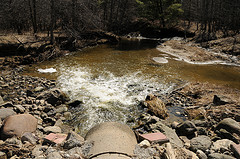 r property, has worked with more than 44,000 landowners over the past 23 years. It has resulted in restoration or enhancement of more than 1 million acres of wetlands, more than 3 million acres of uplands and more than 9000 miles of stream habitat. “PFW and our partners are doing tremendous work,” says Bryan, “on Sage Grouse, white-tailed deer, turkey, waterfowl and many other species.”
r property, has worked with more than 44,000 landowners over the past 23 years. It has resulted in restoration or enhancement of more than 1 million acres of wetlands, more than 3 million acres of uplands and more than 9000 miles of stream habitat. “PFW and our partners are doing tremendous work,” says Bryan, “on Sage Grouse, white-tailed deer, turkey, waterfowl and many other species.”
Similarly, the FWS Coastal Program has worked with partners in 23 high priority coastal areas for more than 25 years, to protect or restore more than 2.3 million acres of coastal habitat.
“I’ve developed a keen sense of the importance of private landowners,” says Bryan. “It’s imperative that we have working landscapes because the minute land is developed, it has no chance for habitat restoration. Landowners are never given the kudos that we owe them for the land management they do, day in and day out.
“The 70% or so of rare and listed species in the U.S. on private lands are there due to the stewardship of private landowners over generations. Nothing m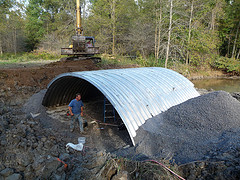 akes landowners prouder than knowing they have something special on their land because of what they do and how they do it.
akes landowners prouder than knowing they have something special on their land because of what they do and how they do it.
“I once visited a rancher in Oregon who had brought in a professor to study forbs, insects, carrying capacity, etc. I asked how he used this information, and the rancher replied, ‘that’s how I rotate my cattle, Bryan!’
“We were riding horseback through one of the most beautiful fields of wildflowers I’d ever seen, and there were Sage Grouse, juvenile and adult, flying out every few paces - far more than in his sagebrush habitat. The rancher said he’d observed that grouse preferred his forbs at that time of year. At his property fence line, we could clearly see the lack of diversity in the sagebrush on the other side, which was federally owned. ‘There,’ pointed out the rancher, ‘is your problem.’”
Landscape Conservation Cooperatives
“We can learn from private landowners and from tribes!” Bryan exclaims. “Let’s mimic their solutions if they’ve proven something works. We have many plans ready for implementation: the State Wildlife Action Plans, the Forest Assessments. Every initiative has listening sessions and plans, but at some point we’ve got to start doing,” he says emphatically. Private landowners, as a group, would rather do than plan - yet another reason they are essential conservation partners.
Now, PFW will be one of many players in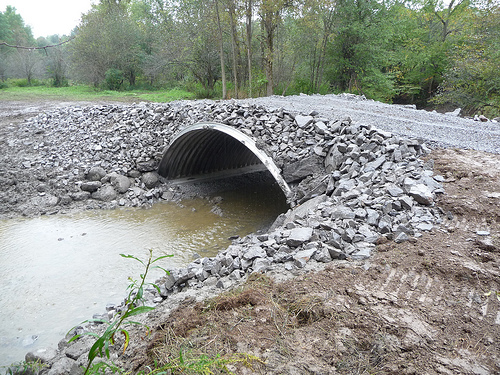 achieving conservation on a landscape scale. According to Bryan, the idea of Landscape Conservation Cooperatives, or LCCs, is taking off. The 21 LCCs established by FWS in the past several years are public-private partnerships that will identify best practices, connect efforts, address gaps, and avoid duplication of effort through improved conservation design. “The LCCs, as inclusive conveners of landscape science, can facilitate implementation of our state-level plans by answering important land management research questions.”
achieving conservation on a landscape scale. According to Bryan, the idea of Landscape Conservation Cooperatives, or LCCs, is taking off. The 21 LCCs established by FWS in the past several years are public-private partnerships that will identify best practices, connect efforts, address gaps, and avoid duplication of effort through improved conservation design. “The LCCs, as inclusive conveners of landscape science, can facilitate implementation of our state-level plans by answering important land management research questions.”
Bryan continues, “The debate is no longer over the science, it’s over filling in the knowledge gaps and using science to make informed decisions on a landscape or species population level. Whether or not you ‘believe’ in climate change frankly doesn’t matter - we are seeing ecosystem changes out there, and landowners are telling us they see shifts. We need to manage and prepare for those.”
“We already have the delivery mechanisms for conservation. If we leverage all our resources, we’ll continue to achieve success.” That begs the question, with slashed budgets will there be any resources left to leverage? Bryan replies, “I think the Farm Bill will be fine. There may be some cuts here and there, but nothing that will hinder progress.”
The False Choice
“I’m the eternal optimist,” chuckl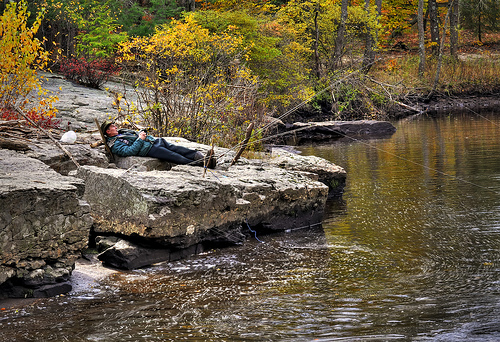 es Bryan. “Nature is resilient, and our role is to give her a chance. The idea that we have to choose between conservation or ranching and farming - that’s a false choice. They are not mutually exclusive. In fact, working land provides for the economy and for conservation.
es Bryan. “Nature is resilient, and our role is to give her a chance. The idea that we have to choose between conservation or ranching and farming - that’s a false choice. They are not mutually exclusive. In fact, working land provides for the economy and for conservation.
“Hunters and fishermen have long been recognized for their contributions to land management - deservedly so - but it’s time for us to highlight the conservation legacy of ranchers and landowners too. Landowners have often held and managed their land for generations, and the vast majority do it very very well.”
 Sign In
Sign In
 Sign In
Sign In
